Functional Art: Making Wooden Kitchen Utensils
When you think about the kitchen, what comes to mind? Perhaps it's the aroma of your favorite dish simmering on the stove, or the delightful sound of utensils clinking as you prepare a meal. But have you ever considered the artistry behind the tools you use? Wooden kitchen utensils are not just practical items; they are a blend of functionality and creativity that can elevate your cooking experience. In this article, we will delve into the fascinating world of crafting wooden kitchen utensils, exploring everything from material selection to design principles. Whether you're a seasoned craftsman or a curious beginner, you'll discover that creating these tools is not only rewarding but also a beautiful way to express your personal style in the kitchen.
Imagine holding a beautifully crafted wooden spoon, its smooth surface gliding effortlessly through your pot of simmering soup. Each utensil tells a story, a tale of the wood it was carved from, the hands that shaped it, and the meals it has helped create. This journey begins with understanding the importance of selecting the right type of wood. Different woods offer unique properties that can affect the durability, appearance, and even the flavor of the food you prepare. For instance, hardwoods like maple and cherry are renowned for their strength and resistance to wear, while softer woods like pine may be easier to carve but less durable in the long run. Choosing the appropriate wood is crucial not only for aesthetics but also for ensuring your utensils stand the test of time.
As we dive deeper into the crafting process, it's essential to equip yourself with the right tools. A well-stocked workshop can make all the difference when it comes to creating stunning wooden utensils. From saws that slice through timber to chisels that carve intricate designs, having the right tools at your disposal is vital. But what about the age-old debate of hand tools versus power tools? Each has its merits, and understanding their differences can help you decide which method aligns with your crafting style. Hand tools allow for a more intimate connection with the wood, providing greater control and precision, while power tools can significantly speed up the process, making them ideal for larger projects.
However, safety must always be a priority in woodworking. Before you start crafting your wooden masterpieces, it's crucial to wear appropriate protective gear, such as gloves and goggles, and to be aware of your surroundings. By following simple safety measures, you can enjoy the process of creating without the worry of accidents.
Once you've selected your materials and tools, it's time to unleash your creativity in the design phase. Designing your utensils is where functionality meets artistry. You'll want to consider not only how the utensil will look but also how it will perform in the kitchen. Balancing functional and aesthetic design is key; after all, a beautiful spoon that doesn't stir well is of little use! Customizing your utensils can add a personal touch, making them unique to you or a perfect gift for someone special. Techniques like engraving or choosing custom finishes can transform a simple wooden spoon into a cherished keepsake.
Finally, the finishing touches are what truly bring your creations to life. Applying the right finish not only enhances the beauty of the wood but also protects it from moisture and wear. Food-safe finishes are essential when crafting kitchen utensils, ensuring that your tools remain safe for food preparation. Proper maintenance and care are equally important; with just a little attention, you can keep your wooden utensils in pristine condition for years to come.
- What type of wood is best for kitchen utensils? Hardwoods like maple, cherry, and walnut are ideal due to their durability and resistance to bacteria.
- Can I use power tools for making wooden utensils? Yes, power tools can speed up the process, but many artisans prefer hand tools for precision and control.
- How do I maintain my wooden utensils? Clean them with mild soap and water, and avoid soaking them. Regularly apply food-safe mineral oil to keep them hydrated.
- What finishes are safe for kitchen utensils? Look for finishes labeled as food-safe, such as mineral oil, beeswax, or specialized wood finishes.
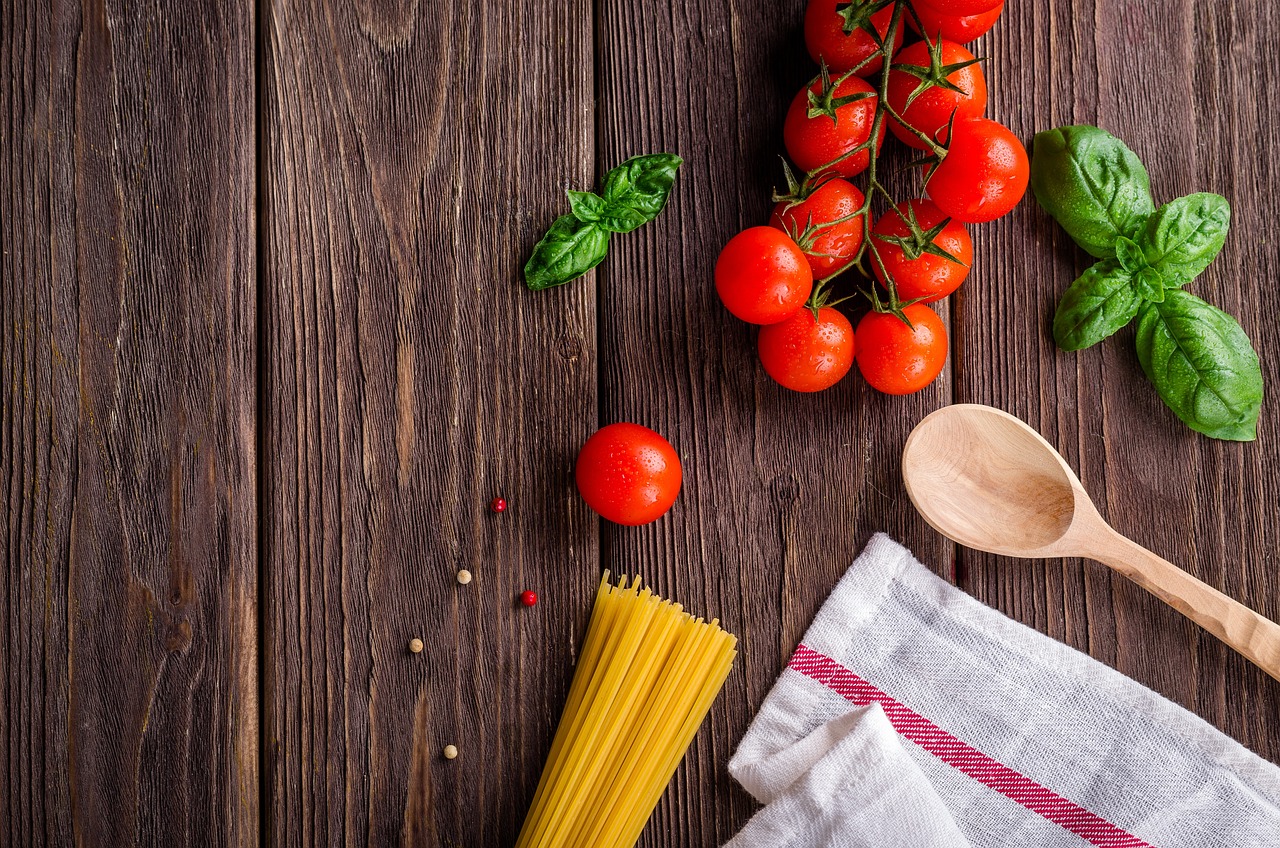
Choosing the Right Wood
When it comes to crafting wooden kitchen utensils, the type of wood you choose can dramatically affect both the durability and aesthetic appeal of your creations. Not all woods are created equal, and understanding their unique properties is essential for any aspiring artisan. For instance, some woods are naturally resistant to moisture and bacteria, making them ideal for kitchen use, while others may warp or crack over time. So, how do you select the right wood for your utensils? Let's dive into the characteristics of popular wood types and what makes them suitable for kitchen tools.
One of the most commonly used woods for kitchen utensils is maple. Known for its hardness and fine grain, maple is not only durable but also has a beautiful light color that can brighten up any kitchen. It’s excellent for cutting boards and spoons, as it resists knife marks and is less likely to harbor bacteria. On the other hand, walnut is a favorite for those seeking a rich, dark aesthetic. Its natural oils provide a certain level of water resistance, making it a great choice for spatulas and serving utensils.
Another option is birch, which is lightweight yet strong, making it an excellent choice for utensils that require a bit of finesse, like whisks or stirring spoons. Birch has a fine, even grain and takes stains and finishes well, allowing for a variety of looks. If you're looking for something a bit more exotic, consider teak. Known for its stunning golden hue and natural oils, teak is incredibly resistant to moisture and decay, making it a premium choice for high-end kitchen utensils. However, it can be more expensive than other options, so keep that in mind.
When selecting wood, also think about the environmental impact. Opt for sustainably sourced woods or reclaimed materials whenever possible. Not only does this practice help protect our forests, but it also adds a unique story to your creations. You might even consider using a mix of woods to create stunning contrast in your utensils, which can serve as a conversation starter at your dinner table.
Here’s a quick comparison of some popular wood types for kitchen utensils:
| Wood Type | Durability | Aesthetic | Common Uses |
|---|---|---|---|
| Maple | High | Light Color | Cutting Boards, Spoons |
| Walnut | Medium | Dark Color | Spatulas, Serving Utensils |
| Birch | Medium | Light Color | Whisks, Stirring Spoons |
| Teak | Very High | Golden Hue | High-End Utensils |
In conclusion, choosing the right wood for your kitchen utensils is about more than just aesthetics; it’s about functionality, sustainability, and personal preference. By understanding the properties of different wood types, you can create beautiful and durable utensils that will serve you well in the kitchen. So, next time you're at the lumberyard, take a moment to consider what each type of wood has to offer. You might just find the perfect match for your next crafting project!

Essential Tools for Crafting
When diving into the world of crafting wooden kitchen utensils, having the right tools at your disposal is as essential as choosing the right wood. Imagine trying to whip up a delicious meal without your trusty spatula or spoon; it just wouldn't be the same! Similarly, crafting requires a well-equipped workshop to bring your creative visions to life. Whether you’re a seasoned artisan or a curious beginner, understanding which tools to use can make all the difference in the quality and efficiency of your work.
First on the list is the saw. A good quality saw is crucial for making precise cuts in your wood. Depending on your preference, you might choose between a hand saw for more control or a band saw for speed and efficiency. Next up are chisels, which allow you to carve out intricate details and shapes in your utensils. A set of chisels in various sizes will give you the flexibility to tackle different projects, from simple spoons to more complex designs.
Another indispensable tool is the router. This power tool helps you create smooth edges and decorative patterns, adding a professional touch to your creations. It’s like giving your utensils a little bit of flair! Don’t forget about the sanding tools; they are essential for achieving that silky-smooth finish that feels great in your hands. You can choose between hand sanding for those delicate areas or a power sander for larger surfaces.
But crafting isn’t just about the power tools; hand tools play a vital role too. They provide a unique connection to the material, allowing for greater control and precision. For example, a simple knife can be incredibly versatile, enabling you to make fine cuts and detailed designs. Pair this with a good workbench, and you have a solid foundation for all your woodworking projects.
To ensure you’re fully prepared, here’s a quick overview of essential tools that every woodworker should consider:
| Tool | Purpose |
|---|---|
| Saw | For making precise cuts in wood |
| Chisels | For carving intricate details |
| Router | For creating smooth edges and decorative patterns |
| Sanding Tools | For achieving a smooth finish |
| Knife | For fine cuts and detailed designs |
| Workbench | For a stable working surface |
In addition to these tools, having a collection of measuring tools like rulers and calipers is crucial for ensuring accuracy in your designs. After all, a spoon that’s too short or a cutting board that’s too thick can lead to frustration in the kitchen. So, equip yourself with the right tools, and you’ll be well on your way to creating beautiful, functional wooden utensils that will impress your family and friends.
Q: What is the best type of wood for kitchen utensils?
A: Hardwoods like maple, cherry, and walnut are excellent choices due to their durability and resistance to wear and tear.
Q: Can I use any type of finish on my wooden utensils?
A: It's essential to choose food-safe finishes, such as mineral oil or beeswax, to ensure your utensils are safe for food contact.
Q: How do I maintain my wooden utensils?
A: Regularly clean them with mild soap and water, avoid soaking them, and apply a food-safe mineral oil occasionally to keep them hydrated.
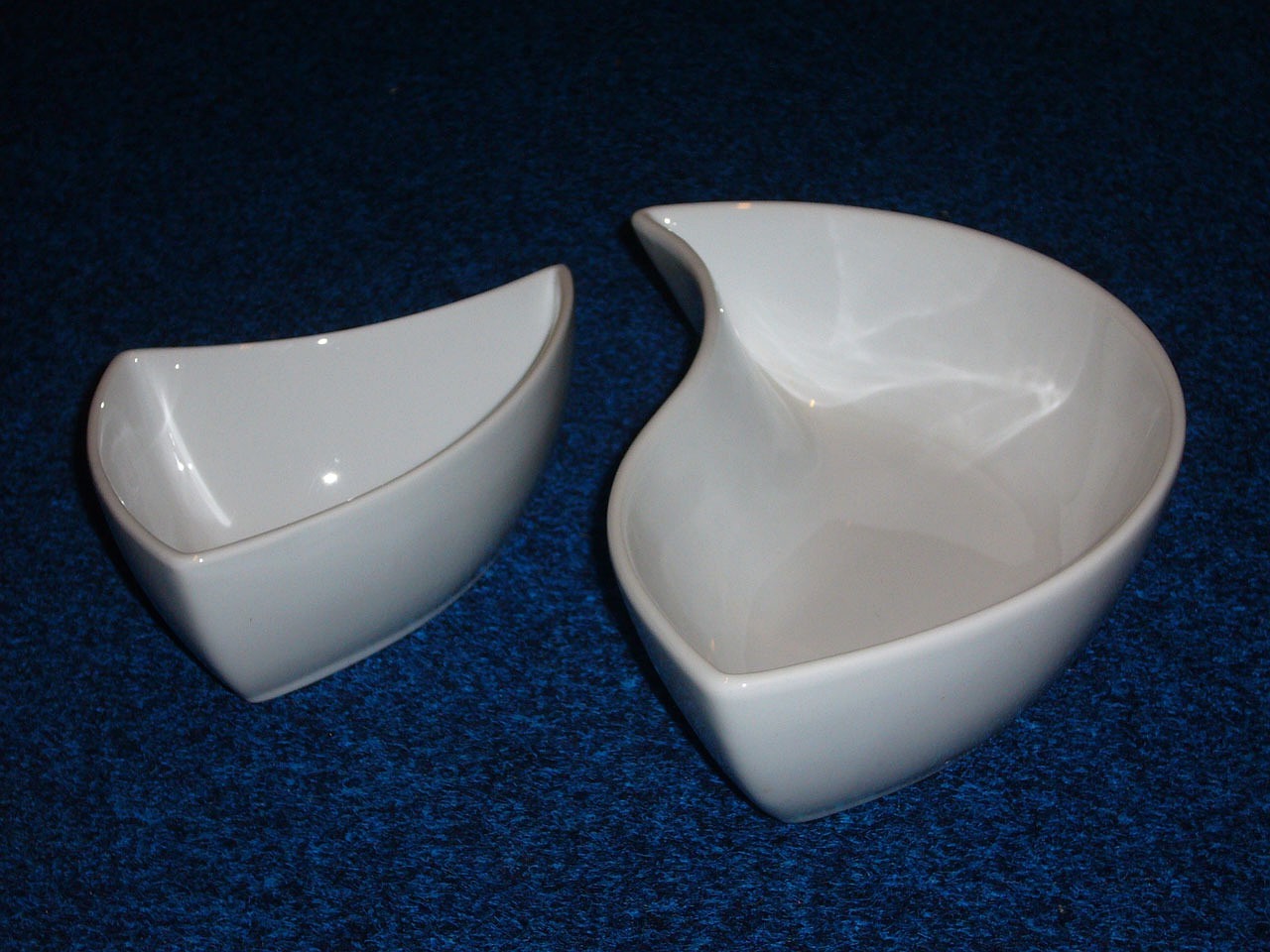
Hand Tools vs. Power Tools
When it comes to crafting wooden kitchen utensils, the choice between hand tools and power tools can significantly impact your experience and the final product. Each method has its own set of advantages and disadvantages, and understanding these can help you choose the right approach for your woodworking projects. Hand tools, such as chisels and hand saws, offer a tactile connection to the wood, allowing for a more intimate crafting experience. This connection can lead to a sense of satisfaction that many artisans cherish. Imagine carving a spoon with just your hands; the feel of the wood, the sound of the blade slicing through the grain—it's a sensory delight!
On the other hand, power tools, like electric saws and routers, can dramatically increase efficiency. They save time and energy, making them ideal for larger projects or when you're pressed for time. However, with speed comes a loss of that intimate connection to the material. For instance, using a power sander might get the job done faster, but it lacks the finesse of hand sanding, which allows you to feel the surface and adjust your technique accordingly. So, which is better? It really depends on your personal style and the specific project at hand.
Here's a quick comparison to help you weigh your options:
| Feature | Hand Tools | Power Tools |
|---|---|---|
| Control | High | Moderate |
| Speed | Slow | Fast |
| Cost | Generally lower | Generally higher |
| Skill Required | High | Moderate |
| Noise Level | Quiet | Loud |
Ultimately, many woodworkers find a balance between the two. They might start with hand tools for detailed work and switch to power tools for rough cuts or larger pieces. The key is to experiment and find what feels right for you. Whether you’re chiseling out intricate designs or swiftly shaping a block of wood with a jigsaw, the joy of creating something unique is what truly matters.
So, what will it be for your next project? Will you embrace the simplicity and control of hand tools, or will you harness the speed and power of electric tools? Whichever path you choose, remember that the heart of woodworking lies in the creation process itself.
- What are the best hand tools for beginners? Start with a basic set including a chisel, hand saw, and a coping saw.
- Are power tools safe to use? Yes, but always follow safety guidelines and wear protective gear.
- Can I achieve professional results with hand tools? Absolutely! Many artisans prefer hand tools for their precision and control.
- How do I maintain my hand tools? Regularly sharpen blades, clean after use, and store them in a dry place.
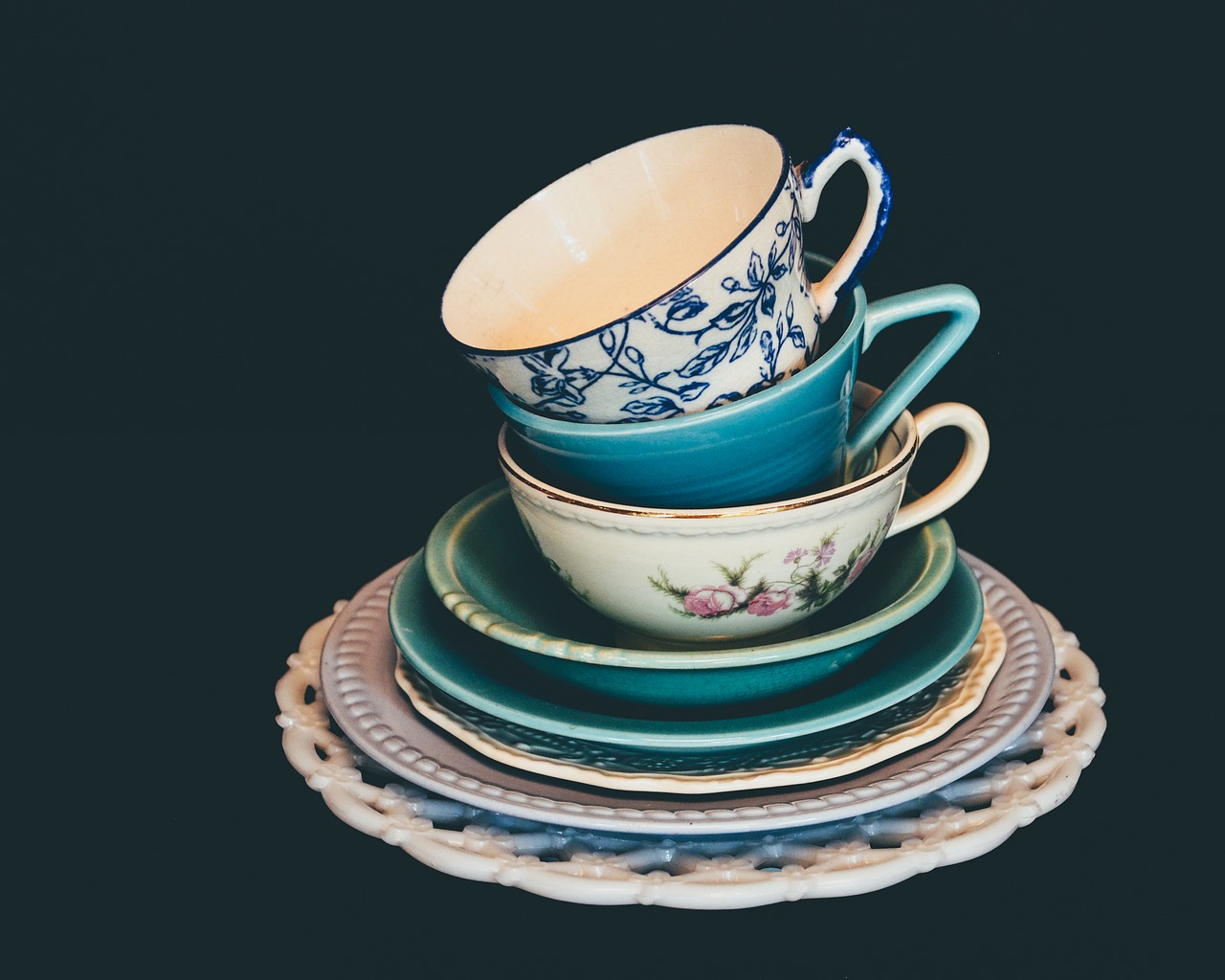
Benefits of Hand Tools
This article explores the art and craft of creating wooden kitchen utensils, highlighting techniques, materials, and the beauty of functional design in everyday cooking tools.
Selecting the appropriate type of wood is crucial for durability and aesthetics. This section discusses various wood options, their properties, and how to choose the best for kitchen utensils.
A well-equipped workshop is vital for creating wooden utensils. Here, we outline the essential tools needed, from saws to chisels, and their specific uses in the crafting process.
Understanding the differences between hand tools and power tools can influence your crafting style. This section compares both methods and offers insights into their advantages and disadvantages.
When it comes to crafting wooden kitchen utensils, hand tools offer a plethora of benefits that can truly enhance your woodworking experience. For starters, using hand tools allows for a more intimate connection with the material. As you carve and shape the wood, you can feel its texture and grain, which can inspire creativity and lead to unique designs. This tactile experience is something that power tools simply cannot replicate.
Another significant advantage is the level of control and precision that hand tools provide. When you’re using a chisel or a hand saw, you can make fine adjustments and see the immediate results of your work. This is particularly important for intricate designs where accuracy is key. Additionally, hand tools are often quieter and create less mess, making for a more pleasant crafting environment.
Moreover, there’s something undeniably satisfying about using hand tools. It’s akin to the difference between cooking with fresh ingredients versus pre-packaged meals. The former allows for creativity and personal touch, while the latter is often more about convenience. Hand tools encourage you to engage with the process, turning the act of crafting into a rewarding experience.
Here are some specific benefits of hand tools:
- Enhanced Precision: Perfect for detailed work and intricate designs.
- Personal Connection: Allows you to feel and understand the wood better.
- Quiet Operation: Creates a peaceful crafting environment.
- Lower Cost: Generally less expensive than power tools.
- Improved Skills: Helps develop your woodworking skills over time.
In conclusion, while power tools have their place, the benefits of hand tools in crafting wooden kitchen utensils cannot be overstated. They foster a deeper connection to your work and allow for a level of precision that can elevate your creations from mere utensils to functional art.
Design is where functionality meets creativity. Here, we explore design principles, inspiration sources, and how to create aesthetically pleasing yet practical kitchen utensils.
Balancing function and beauty is key in utensil design. This section examines how to ensure your creations are both visually appealing and highly functional for everyday use.
Personalization adds a unique touch to wooden utensils. This part discusses various customization techniques, including engraving and finishing options, to make your utensils one-of-a-kind.
The finishing process enhances the appearance and durability of wooden utensils. This section discusses various finishing techniques, including oils and sealants, to protect and beautify your creations.
Choosing the right finish is critical for kitchen utensils. This section highlights food-safe options and their importance in ensuring the safety and longevity of your wooden tools.
Proper maintenance extends the life of wooden utensils. Here, we provide tips on cleaning, drying, and storing your wooden kitchen tools to keep them in top condition.
Q: What type of wood is best for kitchen utensils?
A: Hardwoods like maple, walnut, and cherry are often preferred for their durability and resistance to wear.
Q: Can I use power tools for making utensils?
A: Absolutely! Power tools can speed up the process, but hand tools offer precision and a personal touch.
Q: How do I maintain my wooden utensils?
A: Clean them with mild soap and water, avoid soaking, and regularly apply food-safe mineral oil to keep them hydrated.

Power Tools for Efficiency
When it comes to crafting wooden kitchen utensils, efficiency is often the name of the game. Power tools can be a game-changer, allowing artisans to transform raw materials into beautiful, functional items with impressive speed and precision. Imagine trying to carve a wooden spoon with just a knife; it’s possible, but it would take a lot longer compared to using a band saw or a lathe. Power tools not only save time but also enhance the overall quality of your work.
One of the most significant advantages of using power tools is their ability to handle larger pieces of wood and perform complex cuts that would be challenging with hand tools. For instance, a table saw can make long, straight cuts with ease, while a router can create intricate designs and grooves that add character to your utensils. This efficiency allows you to focus more on the creative aspects of your work rather than getting bogged down by the labor-intensive processes.
However, it’s essential to know when and how to incorporate these tools into your woodworking projects. For example, while a power sander can quickly smooth out rough edges, it’s crucial to finish the final touches with hand sanding to achieve that perfect feel and finish. Moreover, understanding the capabilities of each tool can help you select the right one for specific tasks, ensuring that you maximize both efficiency and quality.
Here’s a quick overview of some common power tools that can significantly enhance your woodworking efficiency:
| Tool | Purpose |
|---|---|
| Table Saw | For making precise, straight cuts in larger pieces of wood. |
| Router | For adding decorative edges and grooves to your utensils. |
| Band Saw | Ideal for cutting curves and intricate shapes. |
| Power Sander | Quickly smooths surfaces and edges. |
While power tools offer undeniable benefits, they also come with their own set of challenges. Safety is paramount, and it's crucial to always wear appropriate protective gear, such as goggles and ear protection. Additionally, understanding the proper usage of each tool can help prevent accidents and ensure a smooth crafting process. Remember, while efficiency is important, the quality of your craftsmanship should never be compromised.
Ultimately, the choice between hand tools and power tools boils down to personal preference and the specific demands of your project. Some artisans prefer the tactile feedback of hand tools, while others appreciate the speed and precision that power tools provide. Whichever route you choose, blending both methods can lead to exceptional results, allowing you to create stunning wooden utensils that are both beautiful and functional.
- What are the best types of wood for kitchen utensils? Hardwoods like maple, cherry, and walnut are excellent choices due to their durability and resistance to moisture.
- How do I maintain my wooden utensils? Clean them with mild soap and water, dry them immediately, and periodically apply food-safe mineral oil to keep them in good condition.
- Are power tools safe to use for beginners? Yes, but beginners should take time to learn about each tool's operation and safety features before use.
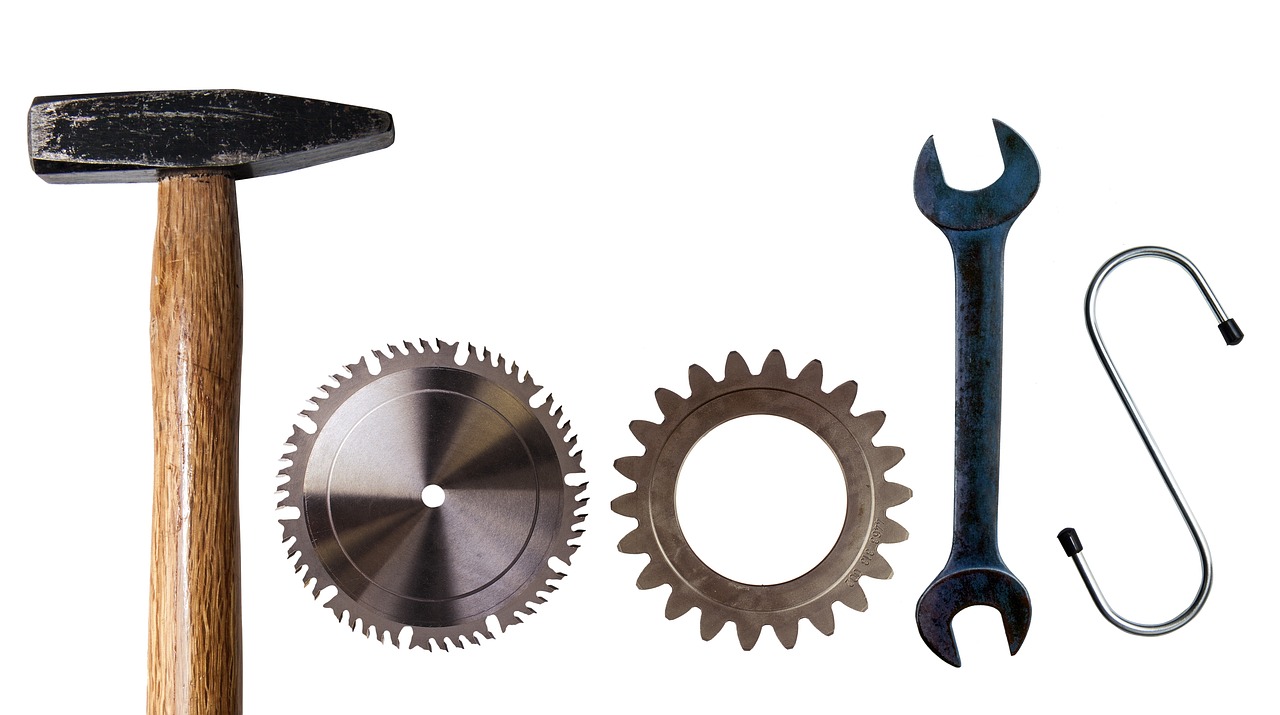
Safety Precautions
When it comes to woodworking, especially when crafting wooden kitchen utensils, safety should always be your top priority. The allure of creating beautiful, functional art can sometimes lead us to overlook essential safety measures. Imagine this: you're deep into your project, the smell of fresh wood fills the air, and suddenly you realize you’ve forgotten to wear your safety goggles. That moment can lead to an accident that could have been easily avoided. So, let’s dive into some crucial safety precautions that will keep you safe while you unleash your creativity.
First and foremost, always wear appropriate personal protective equipment (PPE). This includes safety goggles to protect your eyes from flying debris, ear protection if you're using loud power tools, and a dust mask to prevent inhalation of wood dust. You might think that these items are just optional, but they are your first line of defense against injuries. Think of them as your superhero gear—essential for tackling the challenges of woodworking!
Another vital aspect of safety is maintaining a clean and organized workspace. A cluttered area can lead to mishaps, such as tripping over tools or losing your grip on a piece of wood. Make it a habit to clean up as you go. Not only does this enhance safety, but it also allows for a more enjoyable crafting experience. Consider using a designated area for your tools and materials, ensuring everything has its place. This will help you focus on the task at hand without distractions.
Moreover, understanding how to properly use your tools cannot be overstated. Each tool has its quirks and specific safety protocols. For instance, when using a band saw, always keep your hands at a safe distance from the blade and ensure the blade is sharp. A dull blade can lead to accidents as it requires more force, which can result in losing control. Familiarize yourself with the user manual of each tool, and if you’re unsure, don’t hesitate to ask for help or seek guidance from experienced woodworkers.
Lastly, it’s crucial to be mindful of your surroundings. If you're woodworking in a shared space, communicate with others about what you’re working on. Ensure that children and pets are at a safe distance from your workspace. A sudden distraction can lead to accidents, so maintaining awareness of your environment is key. By taking these precautions, you’re not just protecting yourself; you’re also creating a safer atmosphere for everyone around you.
In summary, woodworking can be a rewarding and enjoyable experience, but it requires a commitment to safety. By wearing the right protective gear, keeping your workspace organized, understanding your tools, and being aware of your surroundings, you can craft beautiful wooden kitchen utensils without putting yourself at risk. So, gear up and let your creativity flow while keeping safety at the forefront of your woodworking journey!
- What safety gear do I need for woodworking? Always wear safety goggles, ear protection, and a dust mask to protect against debris, noise, and dust inhalation.
- How can I maintain a safe workspace? Keep your workspace clean and organized, ensuring that tools and materials are stored properly and that there are no tripping hazards.
- What should I do if I'm unsure how to use a tool? Consult the user manual for guidance, and don't hesitate to ask more experienced woodworkers for help.
- How can I prevent accidents while woodworking? Stay focused on your task, be aware of your surroundings, and always follow safety protocols for each tool.
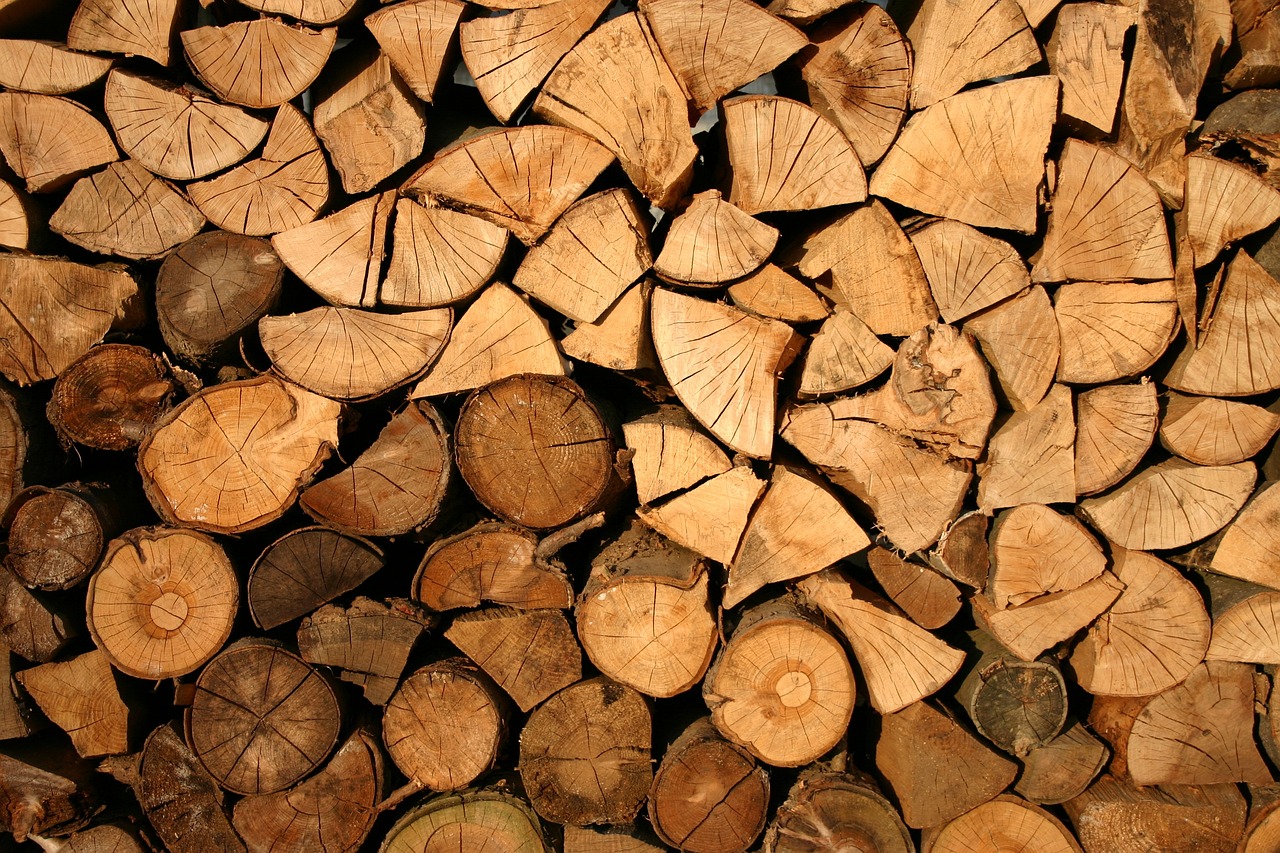
Designing Your Utensils
Designing wooden kitchen utensils is where the magic truly happens. It's not just about shaping wood; it's about transforming functional tools into beautiful pieces of art. When you dive into the world of utensil design, you'll discover that it’s a delicate balance between functionality and aesthetic appeal. You want your spatula or spoon to work well, but you also want it to look stunning hanging on your kitchen wall or resting in a utensil holder. So, how do you achieve this balance? Let’s explore some key principles that can guide you in creating utensils that are as pleasing to the eye as they are to the hand.
First and foremost, consider the functionality of your utensils. What will they be used for? A sturdy wooden spoon needs to withstand stirring thick mixtures, while a delicate spatula might be better suited for flipping pancakes. Understanding the purpose of each utensil will help you make informed design choices, from the thickness of the handle to the shape of the head. For instance, a larger head may be ideal for scooping, while a tapered edge is perfect for scraping. Always keep in mind that a well-designed utensil should enhance the cooking experience, not hinder it.
Next, let's talk about inspiration. Nature is an incredible source of ideas, and many artisans find their muse in the curves of tree branches or the textures of leaves. When designing your utensils, take a stroll in the woods or visit a local farmer’s market. Notice the shapes and forms around you. You might find that a particular curve or grain pattern inspires your next wooden spoon design. Additionally, don't shy away from exploring cultural influences. Different cultures have unique utensil designs that serve specific culinary purposes. Incorporating elements from these designs can add a rich layer of storytelling to your creations.
Now, let’s discuss the importance of proportion. The size and shape of your utensils should feel comfortable in the hand. A good rule of thumb is to create prototypes using less expensive materials before committing to your final design. This allows you to test the ergonomics and functionality without the pressure of using premium wood. Remember, the goal is for your utensils to feel like an extension of the cook's hand, facilitating ease and comfort during use.
Another exciting aspect of designing wooden utensils is the opportunity for customization. Personalization can make your kitchen tools truly one-of-a-kind. Think about incorporating unique engravings, patterns, or even color finishes that reflect your personal style. You could even create a themed set of utensils that match your kitchen decor or the seasons. This adds a touch of personality and can make wonderful gifts for friends and family who appreciate the art of cooking.
Finally, let’s not overlook the finishing touches. The finish you choose can dramatically affect the overall look and feel of your utensils. A smooth, polished surface can enhance the natural beauty of the wood, while a textured finish can add character. Moreover, the right finish protects your utensils from moisture and stains, ensuring they last for years to come. There are many food-safe options available, so be sure to choose one that suits your design while keeping safety in mind.
- What type of wood is best for kitchen utensils? Hardwoods like maple, cherry, and walnut are excellent choices due to their durability and resistance to bacteria.
- Can I customize my wooden utensils? Absolutely! Engraving and unique finishes are great ways to personalize your utensils.
- How do I maintain my wooden utensils? Clean them with mild soap and water, and regularly apply food-safe mineral oil to keep them hydrated.
- Are there food-safe finishes for wooden utensils? Yes, options like mineral oil and beeswax are popular choices that are safe for food contact.

Functional vs. Aesthetic Design
When it comes to crafting wooden kitchen utensils, the debate between functional and aesthetic design is as old as time. Imagine a beautifully crafted spoon that looks stunning hanging on your kitchen wall but is awkward to use for stirring a pot. Now, picture a simple, utilitarian spatula that fits perfectly in your hand and makes flipping pancakes a breeze. Both designs serve a purpose, but the true art lies in finding the perfect balance between these two elements.
Functional design focuses on the usability and practicality of the utensil. It's about ensuring that the tool performs its intended task efficiently and effectively. For instance, a well-designed wooden spoon should have a comfortable grip, an appropriate length, and a shape that allows for easy mixing and stirring. On the other hand, aesthetic design emphasizes the visual appeal of the utensil. This includes the choice of wood, the grain patterns, and the overall form that can make a utensil a centerpiece in your kitchen.
Striking a balance between these two aspects is crucial for any artisan. Here are some key considerations:
- Purpose: Always start with the primary function of the utensil. Ask yourself, "What will this tool be used for?" This question guides the design process.
- Form Follows Function: The shape and design should enhance the usability. Aesthetic elements should complement, not hinder, the tool's purpose.
- Material Selection: The wood you choose can impact both the functionality and the beauty of the utensil. Hardwoods like maple or cherry are not only durable but also possess stunning grain patterns.
- Finish: A well-applied finish can enhance the aesthetic appeal while also protecting the wood, ensuring that the utensil remains functional over time.
Ultimately, the goal is to create utensils that are not only practical but also serve as beautiful additions to your kitchen. Think of it as a dance between form and function, where each step needs to be carefully considered to create a harmonious final product. The best wooden utensils are those that you can admire hanging on your wall while also reaching for them in the heat of cooking. So, the next time you embark on a woodworking project, remember that the heart of your design should resonate with both beauty and utility.
Q: What is more important in utensil design, functionality or aesthetics?
A: Both are important, but functionality should be prioritized to ensure the utensil performs its intended task effectively. Aesthetic elements can enhance the design but should not compromise usability.
Q: Can I achieve both functional and aesthetic designs in my wooden utensils?
A: Absolutely! The key is to start with a clear understanding of the utensil's purpose and then incorporate aesthetic elements that complement its function.
Q: What types of wood are best for creating beautiful yet functional utensils?
A: Hardwoods like maple, cherry, and walnut are excellent choices as they are durable and have beautiful grain patterns that enhance the aesthetic appeal of the utensils.

Customizing Your Utensils
This article explores the art and craft of creating wooden kitchen utensils, highlighting techniques, materials, and the beauty of functional design in everyday cooking tools.
Selecting the appropriate type of wood is crucial for durability and aesthetics. This section discusses various wood options, their properties, and how to choose the best for kitchen utensils.
A well-equipped workshop is vital for creating wooden utensils. Here, we outline the essential tools needed, from saws to chisels, and their specific uses in the crafting process.
Understanding the differences between hand tools and power tools can influence your crafting style. This section compares both methods and offers insights into their advantages and disadvantages.
Hand tools provide a unique connection to the material, allowing for greater control and precision. This part explores why many artisans prefer hand tools for intricate designs.
Power tools can significantly speed up the crafting process. This section discusses when and how to effectively incorporate power tools into your woodworking projects.
Safety is paramount in woodworking. This section covers essential safety measures, including proper gear and techniques to prevent accidents while crafting utensils.
Design is where functionality meets creativity. Here, we explore design principles, inspiration sources, and how to create aesthetically pleasing yet practical kitchen utensils.
Balancing function and beauty is key in utensil design. This section examines how to ensure your creations are both visually appealing and highly functional for everyday use.
Customizing your wooden utensils is where you can truly let your creativity shine! Personalization adds a unique touch, transforming a simple tool into a cherished kitchen companion. Imagine stirring your favorite soup with a spoon that not only serves its purpose but also reflects your personal style. There are various ways to customize your utensils, and the options are as diverse as the woods you choose.
One popular method is engraving. You can add names, meaningful quotes, or even intricate designs that tell a story or commemorate a special occasion. Engraving gives your utensils a personal flair and makes them perfect gifts for weddings, housewarmings, or even as a treat for yourself. Another fantastic option is to explore different finishing techniques. For instance, using a food-safe wood stain can enhance the natural grain of the wood, while a clear finish can protect your utensils and make them shine.
Additionally, consider experimenting with color. While most wooden utensils boast a natural hue, adding a splash of color through food-safe dyes can make your utensils pop! Just imagine a vibrant green spatula or a rich burgundy spoon stirring up your culinary creations. The key is to ensure that any materials used are safe for food contact, so your creativity doesn't compromise safety.
Moreover, you can also customize the shape of your utensils. While traditional designs are functional, creating unique shapes can add an artistic touch. Think about a spoon with a curved handle or a cutting board with a built-in groove for juices. The possibilities are endless, and the only limit is your imagination!
In summary, customizing your wooden utensils not only enhances their beauty but also makes them uniquely yours. Whether through engraving, finishing, color, or shape, each utensil can tell a story. So, roll up your sleeves, unleash your creativity, and make your kitchen tools a true reflection of your personality!
The finishing process enhances the appearance and durability of wooden utensils. This section discusses various finishing techniques, including oils and sealants, to protect and beautify your creations.
Choosing the right finish is critical for kitchen utensils. This section highlights food-safe options and their importance in ensuring the safety and longevity of your wooden tools.
Proper maintenance extends the life of wooden utensils. Here, we provide tips on cleaning, drying, and storing your wooden kitchen tools to keep them in top condition.
- What type of wood is best for kitchen utensils? Hardwoods like maple, cherry, and walnut are ideal due to their durability and resistance to moisture.
- How do I clean my wooden utensils? Hand wash them with mild soap and warm water, then dry them immediately to prevent warping.
- Can I use my wooden utensils for hot foods? Yes, wooden utensils are great for hot foods as they do not conduct heat like metal utensils.
- How often should I oil my wooden utensils? It's best to oil them every few months or when they start to look dry to maintain their luster and prevent cracking.

Finishing Techniques
When it comes to creating wooden kitchen utensils, the finishing process is where the magic truly happens. It’s not just about making your utensils look beautiful; it’s also about enhancing their durability and functionality. After all, who wants to spend time crafting a stunning spoon only for it to wear down after a few uses? The right finishing techniques can protect your hard work from moisture, stains, and the general wear and tear of everyday cooking.
There are several finishing techniques to consider, and each one offers unique benefits. For instance, using natural oils like mineral oil or coconut oil not only gives your utensils a beautiful sheen but also penetrates the wood, providing a moisture barrier that helps prevent cracking and warping. On the other hand, applying a food-safe sealant can create a protective layer on the surface, making cleanup a breeze. It's essential to choose the right finish based on how you intend to use your utensils and the aesthetic you want to achieve.
Let’s dive into some popular finishing options:
- Mineral Oil: A classic choice, mineral oil is easy to apply and safe for food contact. It’s best for regular maintenance and can be reapplied as needed.
- Beeswax: Often mixed with mineral oil, beeswax provides a thicker barrier and adds a lovely gloss. It’s perfect for those looking to give their utensils a more polished look.
- Coconut Oil: This oil not only nourishes the wood but also has antimicrobial properties, making it a great choice for kitchen tools.
- Food-Safe Varnish: For a more robust finish, food-safe varnishes can provide a hard protective coat. However, they may not allow the wood to breathe as well as oils.
Before applying any finish, it’s crucial to prepare your utensils properly. Start by sanding the wood to a smooth finish, ensuring there are no rough edges or splinters. This step is vital as it helps the finish adhere better and creates a more attractive final product. Once sanded, clean the surface to remove any dust or debris. After that, you can begin applying your chosen finish. Remember, multiple thin coats are often better than one thick coat, as they allow for better absorption and a more even finish.
Finally, let’s not forget about the maintenance of your finished utensils. To keep them looking great and functioning well, wash them gently by hand with mild soap and water, and avoid soaking them. After washing, dry them promptly to prevent moisture damage. Reapply your chosen finish regularly—every few weeks or months, depending on usage—to keep the wood nourished and protected.
Q: What is the best finish for wooden kitchen utensils?
A: The best finish depends on personal preference and intended use, but mineral oil and beeswax are popular choices for their safety and ease of use.
Q: How often should I reapply finish to my utensils?
A: It’s generally recommended to reapply finish every few weeks or months, depending on how frequently you use your utensils.
Q: Can I use regular varnish on my kitchen utensils?
A: It's best to use food-safe varnish specifically designed for kitchen items, as regular varnish may not be safe for food contact.
Q: How do I clean my wooden utensils?
A: Hand wash your wooden utensils with mild soap and water, and dry them immediately to prevent moisture damage.
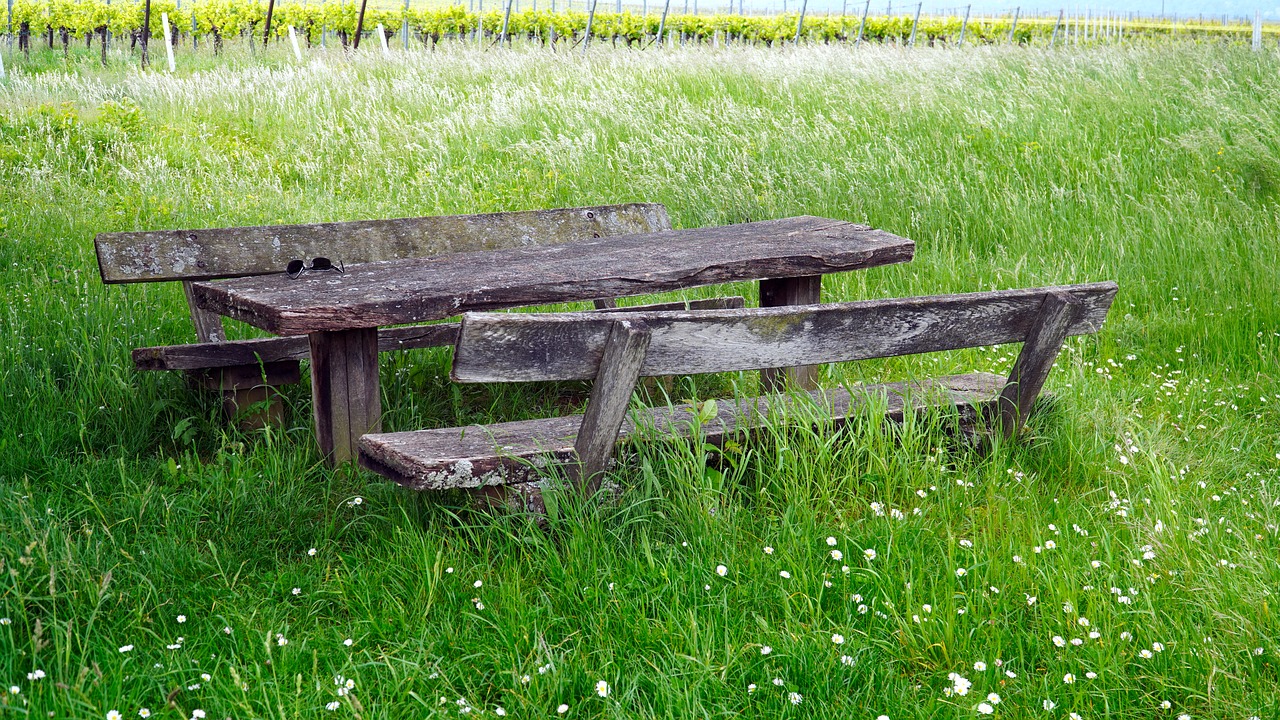
Food-Safe Finishes
This article explores the art and craft of creating wooden kitchen utensils, highlighting techniques, materials, and the beauty of functional design in everyday cooking tools.
Selecting the appropriate type of wood is crucial for durability and aesthetics. This section discusses various wood options, their properties, and how to choose the best for kitchen utensils.
A well-equipped workshop is vital for creating wooden utensils. Here, we outline the essential tools needed, from saws to chisels, and their specific uses in the crafting process.
Understanding the differences between hand tools and power tools can influence your crafting style. This section compares both methods and offers insights into their advantages and disadvantages.
Hand tools provide a unique connection to the material, allowing for greater control and precision. This part explores why many artisans prefer hand tools for intricate designs.
Power tools can significantly speed up the crafting process. This section discusses when and how to effectively incorporate power tools into your woodworking projects.
Safety is paramount in woodworking. This section covers essential safety measures, including proper gear and techniques to prevent accidents while crafting utensils.
Design is where functionality meets creativity. Here, we explore design principles, inspiration sources, and how to create aesthetically pleasing yet practical kitchen utensils.
Balancing function and beauty is key in utensil design. This section examines how to ensure your creations are both visually appealing and highly functional for everyday use.
Personalization adds a unique touch to wooden utensils. This part discusses various customization techniques, including engraving and finishing options, to make your utensils one-of-a-kind.
The finishing process enhances the appearance and durability of wooden utensils. This section discusses various finishing techniques, including oils and sealants, to protect and beautify your creations.
Choosing the right finish for your wooden kitchen utensils is not just about aesthetics; it's about safety too. A food-safe finish ensures that the materials you use are non-toxic and safe for contact with food. This is especially important since kitchen utensils often come into direct contact with food items, and any harmful substances can leach into your meals. So, what options do you have?
Here are some popular food-safe finishes that you can consider:
- Mineral Oil: A popular choice due to its affordability and effectiveness. It penetrates the wood, preventing it from drying out while being safe for food contact.
- Beeswax: Often mixed with mineral oil, beeswax provides a beautiful sheen and additional protection against moisture.
- Tung Oil: A natural oil that hardens upon exposure to air, offering a durable finish that is also food-safe.
- Shellac: A natural resin that is safe for food contact, but it may not be as moisture-resistant as oils.
When applying these finishes, it's crucial to follow the manufacturer's instructions to ensure that the finish is properly cured and safe for use. Additionally, always test a small area first to see how the wood reacts. Remember, the goal is to maintain the beauty of the wood while ensuring that your utensils remain safe for culinary adventures!
In summary, selecting a food-safe finish is a pivotal step in creating wooden kitchen utensils. It not only enhances the beauty of your work but also ensures that your creations are safe for you and your family. So, choose wisely and let your wooden utensils shine!
Q: How often should I reapply the finish on my wooden utensils?
A: It's generally recommended to reapply the finish every few months, especially if you notice that the wood is looking dry or the finish is wearing off.
Q: Can I use regular paint on my wooden utensils?
A: No, regular paint is not food-safe and can contain harmful chemicals. Always opt for finishes specifically labeled as food-safe.
Q: What should I do if my wooden utensils get stained?
A: You can gently scrub them with a mixture of baking soda and water, or use a mild dish soap. Avoid soaking them in water for long periods.

Maintenance and Care
When it comes to wooden kitchen utensils, proper maintenance and care are essential to ensure their longevity and functionality. These beautiful creations not only serve practical purposes but also add a touch of warmth and charm to your kitchen. To keep your utensils in top condition, you need to adopt a few simple habits that will protect the wood and maintain its appearance.
First and foremost, cleaning your wooden utensils after each use is crucial. Avoid soaking them in water or placing them in the dishwasher, as excessive moisture can cause the wood to warp or crack. Instead, wash them by hand with warm, soapy water. Use a soft sponge or cloth to gently scrub away any food residue. After washing, make sure to rinse them thoroughly and dry them immediately with a clean towel. This quick drying method helps prevent moisture from seeping into the wood.
Next, let's talk about oiling. Regularly applying food-safe mineral oil or a specialized wood conditioner will nourish the wood and create a protective barrier against moisture and stains. Aim to oil your utensils every month or whenever they appear dry. Simply pour a small amount of oil onto a clean cloth and rub it into the wood, following the grain. This not only enhances the wood's natural beauty but also helps to prevent cracking and splitting.
Another important aspect of maintenance is storage. Store your wooden utensils in a dry place, away from direct sunlight, which can cause fading and drying. A dedicated utensil holder or a drawer lined with a soft cloth can be perfect for keeping them organized and protected. Avoid stacking them tightly, as this can lead to scratches or dents.
Lastly, always inspect your utensils for any signs of wear or damage. If you notice any cracks, splinters, or rough spots, take the time to sand them down gently with fine-grit sandpaper. After sanding, remember to reapply oil to restore the wood's luster and protection.
In summary, the maintenance and care of your wooden kitchen utensils involve:
- Hand washing with warm, soapy water
- Immediate drying to prevent moisture damage
- Regular oiling to nourish and protect the wood
- Proper storage to avoid damage
- Routine inspection for wear and tear
By following these simple yet effective care tips, you can ensure that your wooden kitchen utensils remain functional, beautiful, and a cherished part of your culinary adventures for years to come!
Q: Can I use my wooden utensils for cooking acidic foods?
A: It's best to avoid using wooden utensils with highly acidic foods, like tomatoes or vinegar, as they can damage the wood over time. If you do, make sure to clean and oil them promptly afterward.
Q: How often should I oil my wooden utensils?
A: Ideally, you should oil your wooden utensils every month or whenever they start to look dry. A good rule of thumb is to oil them whenever you notice a change in their appearance.
Q: Is it safe to put wooden utensils in the dishwasher?
A: No, it is not safe to put wooden utensils in the dishwasher. The heat and moisture can warp and damage the wood. Always wash them by hand and dry them immediately.
Q: How can I remove stains from my wooden utensils?
A: For light stains, a mixture of baking soda and water can be used as a gentle scrub. For tougher stains, you can try rubbing with a cut lemon or vinegar, followed by washing and re-oiling.
Frequently Asked Questions
- What type of wood is best for making kitchen utensils?
When it comes to choosing wood for kitchen utensils, hardwoods like maple, cherry, and walnut are popular choices. These woods are not only durable but also have beautiful grain patterns that enhance the aesthetic appeal of your utensils. Softwoods, like pine, are generally not recommended as they can absorb moisture and may warp over time.
- Do I need special tools to make wooden utensils?
While you don’t need a fully equipped workshop to get started, having some essential tools makes the process smoother. Basic tools include a saw, chisel, and sanding block. If you’re looking to speed things up, you can also consider power tools like a router or jigsaw. However, many artisans prefer hand tools for their precision and connection to the craft.
- What safety precautions should I take while woodworking?
Safety is crucial when working with tools. Always wear safety goggles to protect your eyes from flying debris, and use ear protection if you’re working with power tools. It's also important to keep your workspace tidy and free of clutter to avoid accidents. Lastly, always read the instructions for your tools and practice safe handling techniques.
- How do I ensure my wooden utensils are food-safe?
Choosing the right finish is essential for food safety. Look for finishes that are specifically labeled as food-safe, such as mineral oil or beeswax. These options not only protect the wood but also ensure that no harmful chemicals leach into your food. Always allow any finish to cure completely before using your utensils.
- What are some tips for maintaining wooden kitchen utensils?
To keep your wooden utensils in top condition, wash them by hand with mild soap and warm water, avoiding soaking them. After cleaning, dry them immediately to prevent warping. It's also beneficial to regularly apply a food-safe mineral oil to keep the wood hydrated and prevent cracking.
- Can I customize my wooden utensils?
Absolutely! Personalization can make your utensils unique. You can engrave names or designs onto the surface or use different finishing techniques to add color and texture. Customization not only enhances the beauty of your utensils but also makes them special gifts for friends and family.
- What is the difference between functional and aesthetic design in utensils?
Functional design focuses on how well a utensil performs its job, ensuring it’s practical and easy to use. Aesthetic design, on the other hand, emphasizes the visual appeal of the utensil. The best designs balance both aspects, creating tools that are not only beautiful but also highly effective in the kitchen.



















